If you’re having a tough time obtaining cash, or your financial stability has taken a hit, you might need a personal loan. A personal loan is a money you borrow with the expectation of repaying it, plus interest.
The interest rate on a personal loan is typically higher than that of a bank. Personal loans are an attractive option for many individuals looking to invest in their future while dealing with current financial challenges.
So, if you’ve been considering a personal loan, take a look at our guide to learn more about what online lenders provide and how to get the best deal.
Best Online Lenders Of Personal Loans

A personal loan is basically a loan given to an individual for whatever purpose they choose. It can be used for anything from paying off credit card debt, getting debt consolidation, a home equity line of credit, buying a car, or even financing a vacation.
Many online lenders typically give the borrower an agreed amount of money at an interest rate and within a certain period (usually one year). Once the borrower has paid the loan in full, they own the property used as collateral. You can get info on taking out a personal loan, the online lenders, and their options here.
PayDaySay
 PayDaySay is a leading provider of online payday loans. This lender is best for people that need instant, unsecured loans. Users of PayDaySay are given a list of criteria to determine which loan is best for their needs.
PayDaySay is a leading provider of online payday loans. This lender is best for people that need instant, unsecured loans. Users of PayDaySay are given a list of criteria to determine which loan is best for their needs.
The website offers loans for as low as $100 to as high as $5,000. Interest rates vary up to 400% depending on the loan amount and APR.
There is a minimum loan amount and maximum loan amount; however, APR increases as the loan amount increases. You have a few weeks to repay the full loan amount until your next paycheck comes in.
Pros:
- Several types of loans (from $100 to $5,000).
- Fast funding.
- No additional costs for loan payments.
Cons:
- High-interest rates.
- No credit history effect.
- Need bank account access.
Upstart
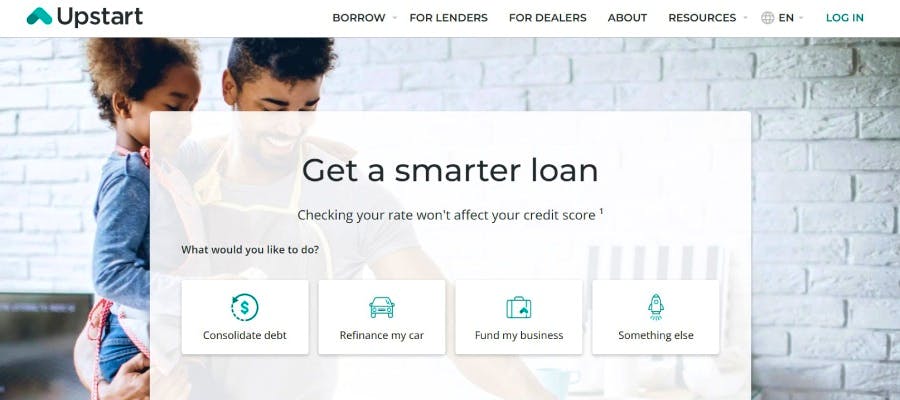
Upstart is a personal loan lender that provides an installment loan for a credit score of 580 or more. They are able to provide loans for up to $50,000 with a term of up to 36 months. They offer a variety of personal loans, and one of the most popular loans is their personal loans.
They offer a minimum loan amount of $1,000 and a maximum loan amount of $40,000.
Upstart’s interest and fees range from 7.95% to 99.95%, and they also have origination fees from 0% to 8%. In addition, they offer payment protection services through overdraft protection and credit card, but this is offered at an additional cost.
Pros:
- Fast funding.
- Soft credit history check.
- Allow new borrowers to get accepted.
Cons:
- Origination fee.
- Two repayment options are available.
- No mobile app.
Upgrade
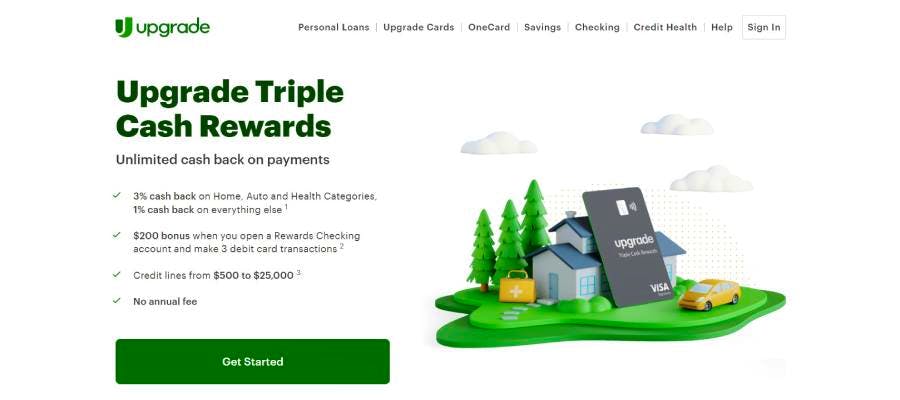
The Upgrade is one of the best personal loan lenders to check out. This company was founded in 2017 and is one of the top personal loan lenders in the US. It is a direct lender that offers quick online loan approval.
The minimum you can apply for is $500, and the maximum amount which can be got is about $25,000.
When taking out a personal loan, you will need a minimum credit history score of 560. The maximum APR for a personal loan falls between 7.96% and 35.97%. The repayment terms for Upgrade multiple lenders are from 24 to 84 months.
Pros:
- Bad credit amount.
- Allows joint applications.
- No payment penalty fee.
Cons:
- Origination fee.
- High APR and interest rate.
- Loans of up to $50,000.
SoFi
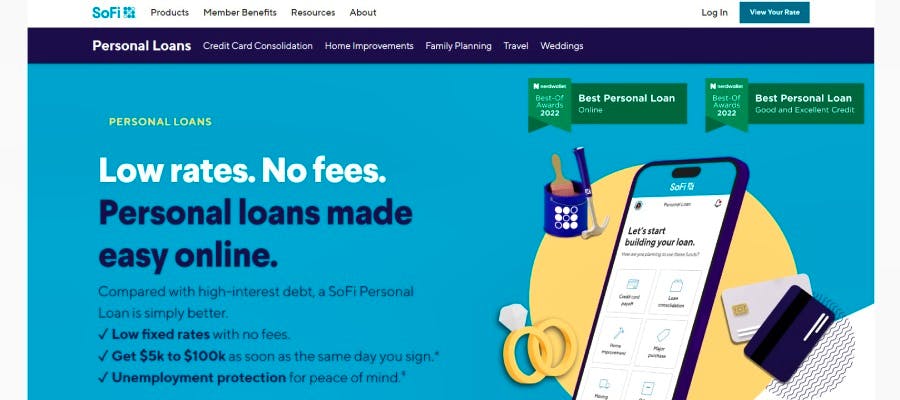
The SoFi personal loan lender stands out in the option for a student loan. This is because the loan is for higher education for either graduate school or undergraduate college.
However, the loan does not have to be limited to just loans for a student. The borrower can borrow up to $150,000 with ten different repayment options.
The borrower has the option of choosing from different interest rates. This lender has no origination fee, and the APR is between 7.99% and 23.43%. The credit can be paid off in 2-7 years, which is great, especially for students. The minimum amount you can get is $5,000, and the maximum is $100,000.
Pros:
- No origination fee.
- Autoplay discounts.
- Joint loan option.
Cons:
- High minimum credit amount.
- You can’t choose the initial payment date.
Personal Loans
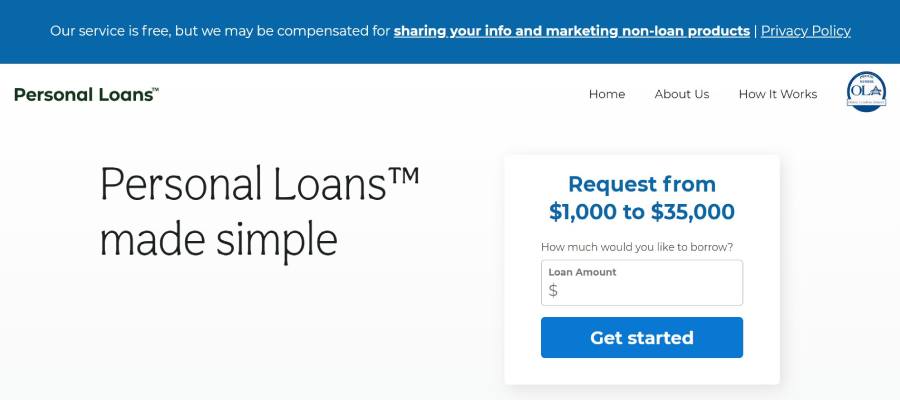
PersonalLoans is based in the United States and has been helping people since 1998. They offer good rates, an easy, fast application process, and excellent customer service. PersonalLoans offers loans at competitive rates while making the entire application process fast and easy.
PersonalLoans offers loans from $1,000 up to $35,000 with a term of 6 years. They also provide an APR from as low as 6.99% and up to 35.99%.
The shortest payment duration is 3 months, while the longest is 72 months. The origination fee ranges from 1 to 5%. You can choose to make your monthly payments, and there is no prepayment penalty for missed payments if you want to pay off your loan early.
Pros:
- Soft credit pull.
- Fast funding.
- Multiple lenders.
- High minimum loan amount.
Cons:
- No direct lenders.
- Fees depend on the lender.

LightStream

LightStream is a personal lending company that provides unsecured loans to individuals for several purposes, such as buying land, or a house. Personal loans can be obtained through various channels, including the company’s website.
LightStream is best for those looking for a straightforward loan application process with minimal documentation requirements.
The minimum and maximum loans are between $5,000 and $100,000. The APR is from 5.99% to 22.49%, and there is no origination fee.
The borrowers also are charged neither late fees nor payment penalty fees. The terms to repay the loan is from 24 to 84 months, so the borrowers will have enough time to pay everything.
Pros:
- No origination fee.
- No later payment fees and payment penalty fees.
- Low APR.
- Fast funding.
Cons:
- No due date flexibility.
- Can’t have many options for loan use.
LendingClub

LendingClub is a personal loan lender in the United States. They offer loans from $1,000 to $40,000 to consumers with good credit, which can choose payment terms of 36 or 60 months.
LendingClub is best for borrowers looking for a personal loan to purchase a car, consolidate debt, fund medical expenses, or get a home equity loan.
LendingClub offers borrowers the choice of applying for a loan of $1,000 to $40,000 and offers rates as low as 8.30% and as high as 36%. The origination fee is between 3% and 6% for the loan you borrow, but the average charge is 5%. They also charge a late payment fee of 5% but can go up to 15%.
Pros:
- Available joint application.
- Fair credit score accessibility.
Cons:
- Origination fee.
- Late payment fee.
PenFed
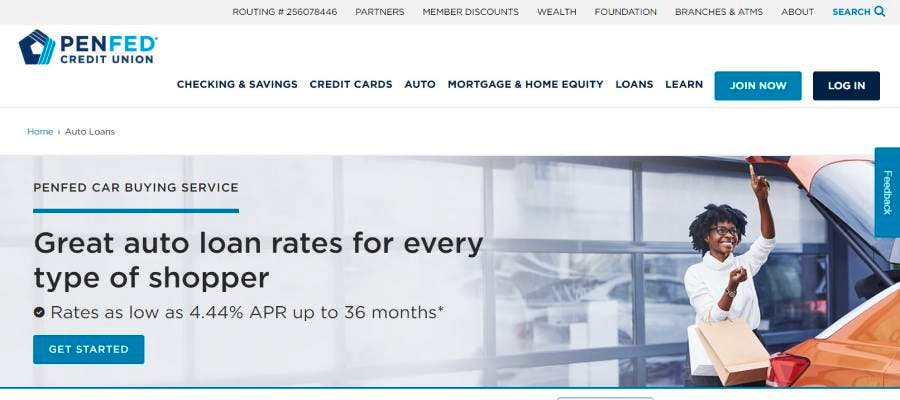
PenFed offers a variety of personal loans designed to meet the needs of both borrowers and creditors. PenFed’s personal loan offerings include home equity loans, debt consolidation loans, and emergency expenses. PenFed also offers loans for special purposes, such as paying for education expenses.
PenFed provides loans from $600 to $50,000 for users with a minimum credit score of 650.
Personal loan rates start at 5.99% and go up to 17.99%. Loan terms are available for periods ranging from 12 to 60 months. There is no origination fee, although lenders may charge a late fee of up to $50.
Pros:
- Fast funding.
- Wide loan amount range.
- No origination fee.
Cons:
- No joint application.
- Must have PenFed membership.
7 Steps on How To Get a Personal Loan
Choosing the right personal loan can be difficult due to the many available lending options. Some factors to consider when choosing a personal loan include the interest rate, loan term, and repayment options.
You will also want to consider the fees associated with the loan, as well as the lender’s reputation. In addition, most lenders offer various loan types, so it’s important to evaluate each option before committing to one to find the best fit for your needs.
1. Decide on The Loan Type
One crucial factor to consider when pursuing a personal loan is which one best suits your needs. There are many types of personal loans available, like unsecured and secured loan. Each type of loan has its advantages and disadvantages, so be sure to research before choosing one.
For example, some loans may have a lower interest rate, while others may have more flexible repayment terms. Before selecting a loan, you’ll need to consider what’s most important to you.
Unsecured Personal Loans
An unsecured personal loan (often called an unsecured loan) is a loan that is used to purchase goods or make large purchases. Unsecured loans are without collateral, and the lender will base their lending decision on the borrower’s credit rating.
Unsecured personal loans may be appropriate for those with a moderate or decent credit score and typically for those rejected for other loans. The pros of unsecured loans are that no collateral is required, and the interest rate can be pretty competitive with other loans.
Like all loans, there are drawbacks to unsecured loans as well.
Borrowers may have to pay a higher loan interest rate and meet stricter qualifications. As the lender, bank or credit union doesn’t have the collateral. They might require documentation of the gross monthly income and expenses.
Secured Personal Loans
Secured personal loans are typically provided as a line of credit. They require a borrower to use an asset as collateral to secure the loan. Examples of assets that can be used as collateral for a secured personal loan are a car, house, boat, motorcycle, RV, or a collection of valuable jewelry. They typically take one month to be approved.
A secured personal loan offers a low interest rate and flexible repayment terms. For example, the borrower can choose to pay back the loan in fixed monthly installments or make a lump sum payment at the end of each month.
The pros of a secured loan are that it is easy to get, requires little paperwork, and has flexible repayment options. The cons of secured loans are that the interest rates can be high, and the borrower may not qualify if they are bad credit borrowers.
2. Decide How Much To Borrow
With so many options available to borrow money, it’s important to take some time to figure out how much money you should borrow.
First, decide what your goal is for using a personal loan. Then the next question is, how much money do you need? Use the personal loan calculator to check average monthly expenses and subtract your monthly income to get the number you may need for a monthly payment.
Pay attention to the details and take your time to get the right answer.
3. Check Your Credit Score
Credit scores are important in determining what kind of loan the user may be eligible for. For example, if someone has a good debt to income ratio (DTI) and credit score (above 700), they are more likely to get a good rate on loans, whereas someone with a bad credit score may encounter high-interest rates on loans.
Although many companies offer credit score checks, the user should be cautious about giving away his credit card information to these services, as there are more reliable ways to obtain a credit score. For example, users can order their credit score from sites like Credit Karma or through an email from Experian.
Users can check their credit score against a chart on lenders’ websites to see what loan they would be eligible for. A bad credit score does not mean the user cannot get a loan or have good rates. However, it may mean that the user will have to pay a higher interest rate than normal if they decide to take out a loan in any type of transaction.
4. Compare Estimated Rates
If you have credit card balances and plan to use a personal loan to help you pay it off, interest rates on a personal loan can be lower than on a credit card. Therefore, it can be an excellent option for those with outstanding debt.
However, it’s essential to understand which personal loan is best for you to choose. Research to compare personal loan rates can save you money.
Most personal loans come in many shapes and sizes, so they can be confusing to compare. It’s best to look at what’s available and determine which type of personal loan best suits your needs.
For example, it may be best to choose a short-term loan with no fees and very low-interest rates for an emergency. Or, if you want to pay off your credit card balance faster than usual, it may be wise to take out an unsecured personal loan with a lower interest rate than the credit card company currently offers.
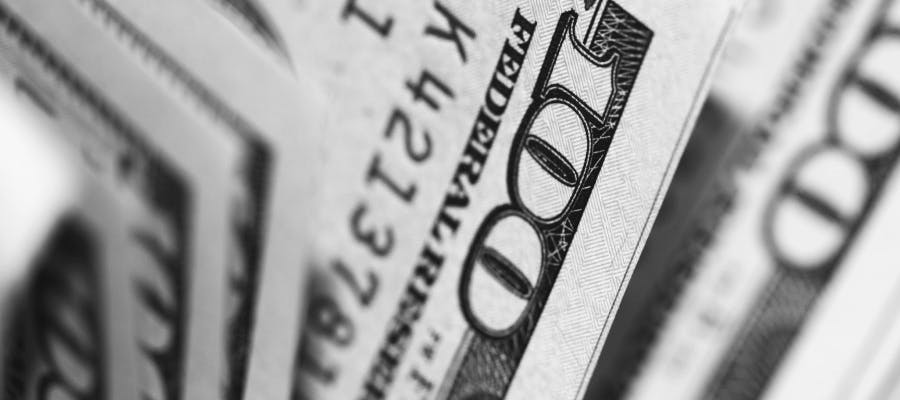
5. Choose The Best Lender
Comparison of personal loan lenders is tricky and may depend on personal circumstances. However, some features and conditions are important to look for. Some features are dependent on the purpose of the loan with some lenders.
When comparing lenders, look at the following:
- The APR or interest rate of the loan.
- The conditions of the loan such as length, amount, and purpose.
- If there are any extra fees if you pay off the loan early or late.
- Check out online reviews from other customers.
- Read about customer service and what people thought about them.
- Inquire about the lender’s policy on outstanding debt collection and major credit reporting agencies.
Many personal loans are available today, so finding the right one can be confusing for you. The main thing to consider is your needs and then search for a lender that offers loans in that category.
6. Prepare Needed Documents
Before applying for a personal loan, you must understand what documents you must prepare. Loan applications should include your contact information, residency status, income, and employment status. Here are some of them:
- Loan Application: You must provide basic identification, such as a driver’s license or ID card, voter registration card, and employment information. While submitting a loan application, you may also be required to provide proof of income and the number of your outstanding debts and assets.
- Proof of Identity: This will usually include one form of identification, such as a birth certificate, driver’s license, or Social Security card (if you’re a U.S. citizen). If you can’t provide any form of identification, you may need to provide two other forms of ID, such as a utility bill and a credit card statement.
- Proof of Income: You will need to provide evidence of your ability to repay the loan, such as pay stubs or a recent property tax receipt/tax returns. If you are self-employed, you may be asked for business records that show your income.
Sometimes, lenders may require two months of bank statements to ensure enough money in your savings account to cover the loan. - Proof of Address: You may be asked to provide proof of residence, such as a utility bill, credit card statement, and bank statements. If you are an immigrant, you may need to provide documents that show your immigration status in the U.S., such as a green card or visa.
7. Apply And Get Approved
Applying for an online loan entails a few simple steps. Just follow these 5 guidelines, and you’ll be on your way:
- Find a lender. Many lenders offer online loans, so you’ll need to find one that suits your needs.
- Most lenders will have a personal loan application that you’ll need to fill out. The application will ask for your personal information, income, debts, and other financial information.
- Submit the required documentation. When filling out a personal loan application, you’ll be asked for certain documents. It’s best to check with the lender before applying so that you know what types of documents they require. Some common documents include a mortgage statement and recent pay stubs.
- Get approved. After submitting your application, the lender will review it and approve or decline your request for a loan. If approved, the terms will be explained in an email or text message that you receive.
What to Know Before Applying For a Personal Loan
When considering a personal loan, the user should first weigh the benefits and drawbacks of taking out a loan.
- The amount of money they need: The amount of money they need will vary depending on the specific loan they are applying for and their individual financial situation.
- The terms of the loan: The terms of the loan will vary depending on the lender and the specific loan product.
- The APR: The APR will vary depending on the lender and the specific loan product.
- The availability of credit: Credit availability will vary depending on the user’s credit score and the amount of money they are borrowing.
How Can I Get a Personal Loan With Bad Credit
There are a few ways to get a personal loan for bad credit borrowers. One way is to go through a lending company. Lending companies usually have high-interest rates and require a higher credit score than traditional banks.
Another way is to get a direct personal loan from a bank. Most personal loans are usually much cheaper than lending companies, but you will likely have to pay back the loan in full within a shorter period.
The last way is to get a personal loan with bad credit through a peer-to-peer lending site. These sites are typically more expensive than banks, but you will have more choice in terms of loan amount and repayment schedule.
What To Do If You’re Denied?
Denial for a personal loan can be due to a few reasons, but users can take this information to improve their chances of getting approved.
Bad credit score
Credit scores can drop due to missed payments (often monthly payments), high levels of debt, no tax returns, and owing money on items not allowed by lenders, such as gambling debts.
Not enough income to cover the loan
It can happen if the lender requires the borrower to earn at least 30-40% of their existing debt as income each month. If the borrower does not have this income, they will not be able to make monthly payments on time.
Lack of security for the loan
The lender may require security from the borrower to get approved for the loan. If the borrower has no assets, the lender can’t get their money back if something goes wrong with the loan.
How Long Does It Take to Get a Personal Loan?
Getting a personal loan can be daunting for those without extensive credit reports. While some lenders may be willing to work with a borrower regardless of their credit score, others may require a higher credit score to qualify.
The time to receive a personal loan can also vary depending on the lender. Some lenders may require as little as several hours, while others may take up to several months. In any event, be patient and be sure to compare interest rates and terms to find the best option for you.
